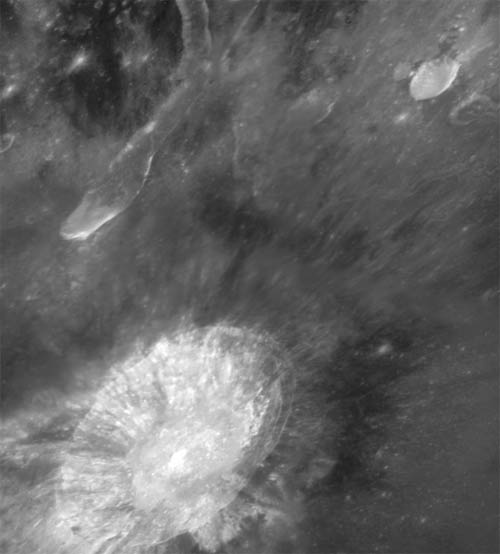Over its 15-year career, the Hubble Space Telescope (HST) has captured some of the most dramatic images of space. Although best known for providing the deepest views of the universe, the orbiting observatory now has turned its eyes on Earth’s closest neighbor.
Using Hubble, NASA scientists have combed the Moon for oxygen-bearing minerals. Without a breathable atmosphere, lunar deposits such as ilmenite, an iron titanium oxide, are potential sources of oxygen. In January 2004, the Bush administration declared a new mandate that refocused NASA on human exploration, calling for a return to the Moon. Harvesting lunar-surface minerals will be instrumental for achieving a goal of this directive: supporting a long-term human presence on Earth’s satellite.
HST’s images are the first high-resolution ultraviolet photographs of the Moon. The imaging team looked at Aristarchus impact crater, Schroter’s Valley, and the Apollo 15 and 17 landing sites. These views will provide scientists with clues to mineral variations on the lunar surface. By examining these locations, NASA can plan future expeditions to target the Moon’s resources directly.
Researchers are comparing the HST observations with lunar rocks collected from the Apollo sites. This evaluation already has helped shed light on the sites’ resource potential, because no lunar mission has ever visited Aristarchus or Schroter’s Valley.
“Our initial findings support the potential existence of some unique varieties of oxygen-rich glassy soils in both the Aristarchus and Apollo 17 regions,” says Jim Garvin, principal investigator for this project. “They could be well-suited for visits by robots and human explorers in efforts to learn how to live off the land on the Moon. While it will require many months before fully quantitative results can be developed, we already have evidence that these new observations will improve the precision by which we can understand materials such as ilmenite to help better inform exploration decisions.”










